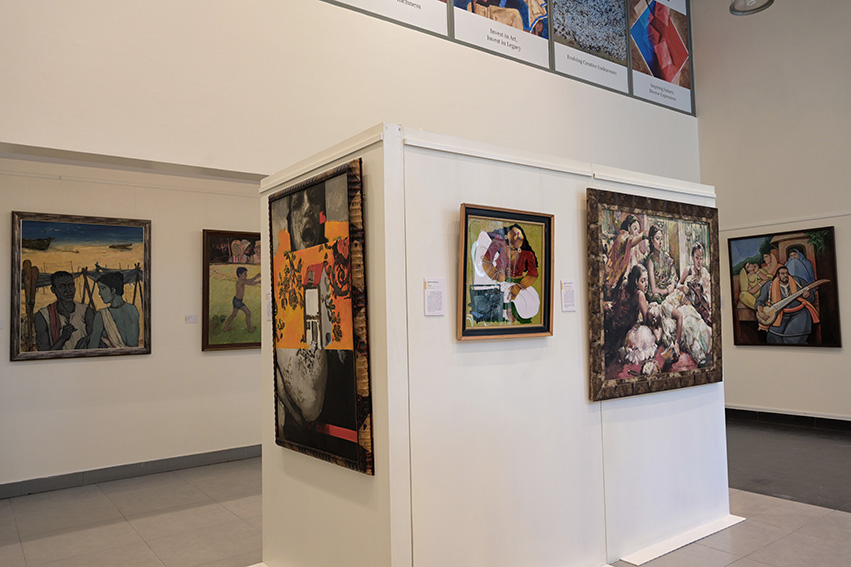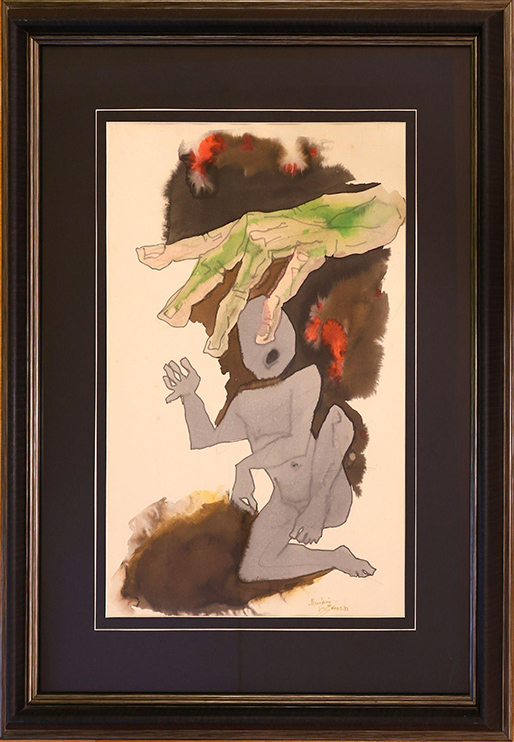An Enduring Legacy Of India’s Rich Artistic Tradition The art exhibition at Gallery G, Bengaluru, aims to bridge the historical depth and contemporary vitality of Indian art


By Neha Mehrotra
Gallery G in Bengaluru is set to hold ‘The Masters & The Modern: An Amalgamation of the Old & New World Classics’ from February 26 to March 31. Curated by Archana Shenoy, the exhibition seamlessly weaves together the historical depth of India’s artistic legacy with the contemporary vibrancy of its modern art scene.
Shenoy presents a diverse array of works, spanning from the timeless masterpieces of V.S. Gaitonde and M.F. Husain to the innovative contributions of contemporary luminaries such as Jogen Chowdhury. We sat down with Gitanjali Maini, Founder of Gallery G, and Archana Shenoy, Director of Curatorial Practices, to learn more about the vision behind the exhibition.
1. What inspired the theme “The Masters & The Modern,” and how does it add value to the narrative of Indian art?
The theme ‘The Masters & The Modern’ is inspired by India’s cultural heritage and its evolution into the contemporary art scene. It not only celebrates the foundational work of traditional masters but also showcases how modern artists are innovating within and beyond these traditions. It offers a dialogue between the past and present, highlighting the continuity and dynamic evolution of Indian art. The theme offers an educational journey, highlighting historical shifts and cultural richness while emphasising contemporary artists’ inventive spirit within traditional frameworks. It also underscores the significance of preserving India’s artistic heritage, reflecting its diversity and global influences.
2. Could you discuss some of the key figures from Indian art history featured in the exhibition, and how do their works represent the legacy of Indian art?


In an exhibition like “The Masters & The Modern,” figures such as M.F. Husain, F.N. Souza, V.S. Gaitonde, K.H. Ara, and B. Prabha stand out as architects of the modern Indian art movement. M.F. Husain, with his dynamic portrayal of Indian themes, brought the vibrancy of Indian culture to the canvas, blending folk motifs with modernist techniques. F.N. Souza, a founding member of the Progressive Artists’ Group, pushed the boundaries of Indian art into new territories with his expressive, often provocative works that critique society, religion, and sexuality.
V.S. Gaitonde’s abstract paintings are known for their spiritual and philosophical depth, marked by a minimalist approach and a mastery over colour and texture, offering a meditative and introspective perspective on modern art. K.H. Ara brought the everyday and the ordinary into the realm of art, with a focus on still life. His work is celebrated for its simplicity and sensitivity, highlighting the beauty in the mundane. B. Prabha is noted for her poignant depictions of rural Indian women, and her paintings offer a narrative of the struggles and resilience of women, reflecting empathy and strong social commentary. Together, these artists encapsulate the diversity and dynamism of the Indian modern art movement.
3. Can you discuss any overarching themes that emerge from the juxtaposition of artworks by masters and modern artists?
The juxtaposition of artworks by masters and modern artists in such exhibitions often reveals overarching themes of transformation, identity, and dialogue between the past and present. Personally, I find that this interplay between the traditional and the contemporary speaks volumes about the evolution of cultural and artistic expressions. It highlights how modern artists are not just inheritors of tradition but also innovators who reinterpret and redefine it for their times.
One recurring theme is the exploration of identity—both national and personal—where artists grapple with questions of belonging, tradition, and modernity. The masters often rooted their identity in the cultural and historical narratives of their time, using their art to define and preserve these narratives. Modern artists, on the other hand, questioned and expanded these narratives, reflecting the globalised, interconnected world they inhabit. Their work often embodies a dialogue with the past, suggesting both continuity and rupture.
Another theme is the transformation of the perception of art itself—from sacred and ritualistic purposes to expressions of individual vision and social commentary. This shift mirrors broader societal changes and the role of art in questioning and shaping societal values.
4. The exhibition also highlights Bengal masters and modernists. Can you shed light on their contributions to the broader landscape of Indian art?
Bengal artists, including Ganesh Pyne, Prakash Karmakar, Bijan Choudhury, Rabin Dutta, Isha Mahammed, and contemporary figure Jogen Chowdhury, extend the legacy of the Bengal School of Art. Pyne’s introspective themes blend Indian mythology with modernity, while Bijan Choudhury, through his politically charged and allegorical compositions, critiqued societal norms and injustices, blending traditional motifs with a modernist critique. Rabin Dutta and Isha Mohammed, each in their own way, continued to innovate the Bengal School’s visual language with contemporary themes, maintaining a connection to traditional Indian aesthetics.
Jogen Chowdhury has been instrumental in furthering the narratives of the Bengal School into the modern era. Together, they contribute to the rich tapestry of Indian art, challenging norms and exploring new expressions, thus ensuring the Bengal School’s relevance in the modern era.
5. For newcomers to Indian art, what advice would you give to enhance their appreciation and understanding of the artworks?
Approach each artwork with curiosity and an open mind. Take time to observe the details—colour, form, texture—and consider the cultural and historical context behind each piece. Read the accompanying descriptions to gain insights into the artist’s intentions and the artwork’s significance within the broader narrative of Indian art. Engage with multimedia guides or exhibition tours to deepen your understanding. Finally, allow yourself to emotionally connect with the artwork, as this personal interaction is where true appreciation begins. Remember, there’s no right or wrong way to experience art; it’s about the dialogue between the viewer and the artwork.
More from our site
Recent Posts
Where to Sip the Best Whisky Cocktails in India
On International Whisky day, head to these restaurants to sip the finest whisky cocktails
On International Whisky day, head to these restaurants to sip the finest whisky cocktails
The New Defender OCTA: Epitome of Power, Luxury and Performance
New Defender OCTA is the most dynamically accomplished Defender ever created, with unmatched breadth of capability and performance both on- and off-road
New Defender OCTA is the most dynamically accomplished Defender ever created, with unmatched breadth of…
Shaping Tomorrow’s Golf Champions With Leela Palace Bengaluru
The 3rd edition of The Leela Golf Tournament celebrated young talent and brought together skill, precision and camaraderie!
The 3rd edition of The Leela Golf Tournament celebrated young talent and brought together skill,…
The Duo Behind Late Checkout, Redefines Hospitality
In conversation with the founders of Pawan Shahri and Nikita Harisinghani, the duo behind Chrome Hospitality Asia
In conversation with the founders of Pawan Shahri and Nikita Harisinghani, the duo behind Chrome…
Precision, Durability, and Swiss Legacy
Victorinox launches the Swiss Army collection, featuring three distinct models that emphasise exceptional quality, resistance and versatility
Victorinox launches the Swiss Army collection, featuring three distinct models that emphasise exceptional quality, resistance…
A New Era of Luxury Interiors With Sussanne & Gauri Khan
Sussanne Khan & Gauri Khan unite to bring an awe-inspiring, six-storey sanctuary of luxury, art, and design in Hyderabad
Sussanne Khan & Gauri Khan unite to bring an awe-inspiring, six-storey sanctuary of luxury, art,…

